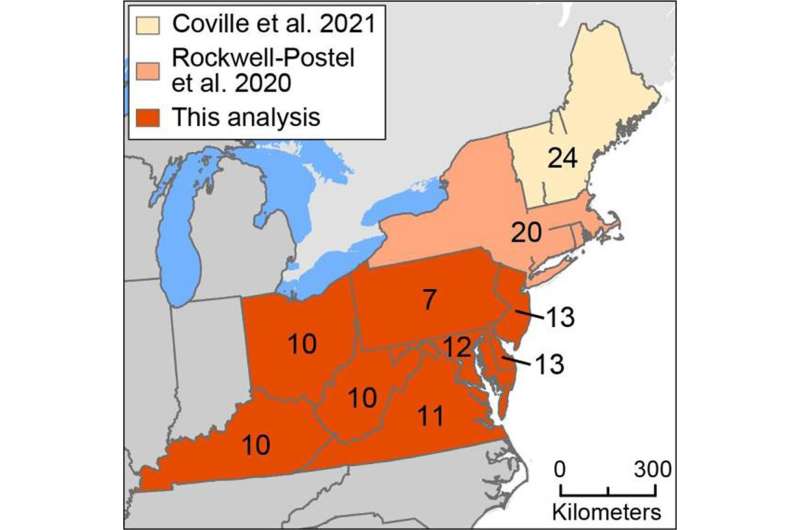
In an online article published In Invasive Plant Science and Management, Justin D. Salva and Bethany A. Bradley performed and reported impact assessments on 104 plants most likely to expand with climate change into one or more Eastern U.S. States (Delaware, Kentucky, Maryland, New Jersey, Ohio, Pennsylvania, Virginia, and/or West Virginia) by 2050.
Among these plants, 32 are high-impact species associated with negative impacts on ecological communities or multiple native species, and many are also associated with socio-economic impacts.
“The new research helps to prioritize which range-shifting invasive species to target in the region for proactive prevention and management,” says Bethany Bradley, Ph.D., Professor of Biogeography and Spatial Ecology in the Department of Environmental Conservation at the University of Massachusetts—Amherst.
“The impact assessment created in this study, and in related companion papers in New York and New England states, can inform state weed risk assessments by identifying emerging invasive species most likely to cause negative impacts, including many that are tied to ornamental plant trade.”
More information:
Justin D. Salva et al, High-impact invasive plants expanding into mid-Atlantic states: identifying priority range-shifting species for monitoring in light of climate change, Invasive Plant Science and Management (2023). DOI: 10.1017/inp.2023.24
Citation:
Climate change to bring invasive weeds to mid-Atlantic and northeastern US states: Study (2024, February 9)
retrieved 10 February 2024
from https://phys.org/news/2024-02-climate-invasive-weeds-mid-atlantic.html
This document is subject to copyright. Apart from any fair dealing for the purpose of private study or research, no
part may be reproduced without the written permission. The content is provided for information purposes only.







